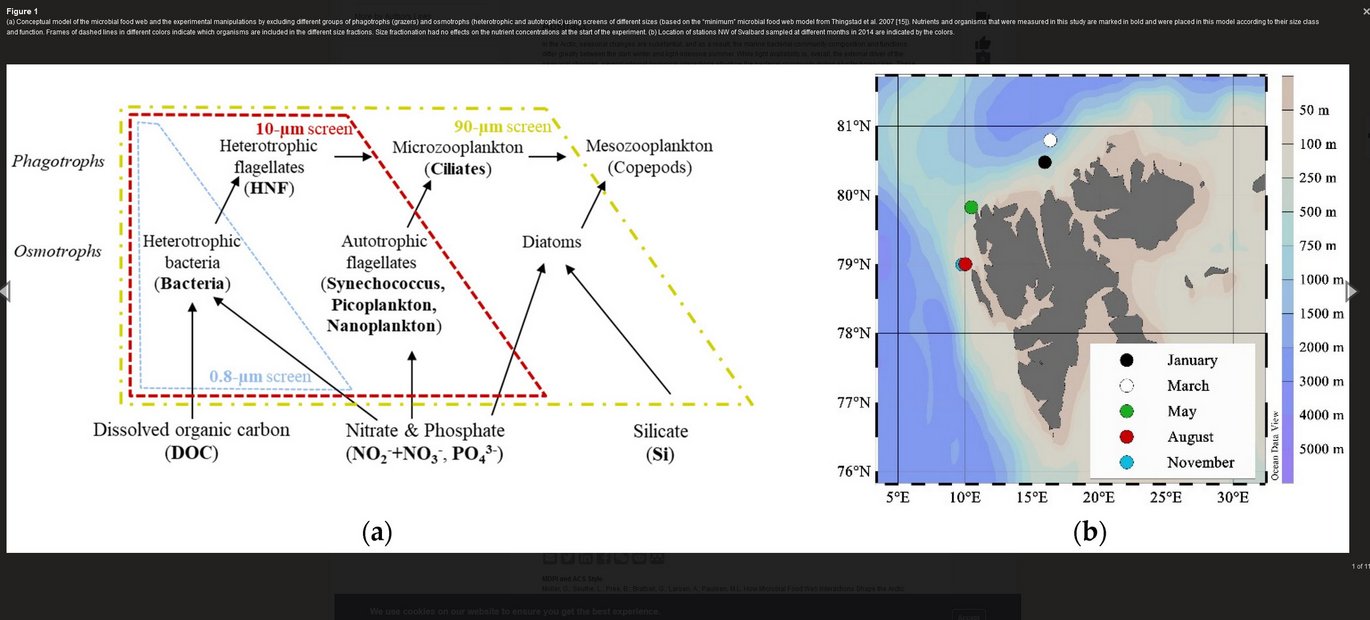How microbial food web interactions shape the arctic ocean bacterial community revealed by size fractionation experiments
New publication by Oliver Müller, Lena Seuthe, Bernadette Pree et al.

Abstract
In the Arctic, seasonal changes are substantial, and as a result, the marine bacterial community composition and functions differ greatly between the dark winter and light-intensive summer. While light availability is, overall, the external driver of the seasonal changes, several internal biological interactions structure the bacterial community during shorter timescales. These include specific phytoplankton–bacteria associations, viral infections and other top-down controls. Here, we uncover these microbial interactions and their effects on the bacterial community composition during a full annual cycle by manipulating the microbial food web using size fractionation. The most profound community changes were detected during the spring, with ‘mutualistic phytoplankton’—Gammaproteobacteria interactions dominating in the pre-bloom phase and ‘substrate-dependent phytoplankton’—Flavobacteria interactions during blooming conditions. Bacterivores had an overall limited effect on the bacterial community composition most of the year. However, in the late summer, grazing was the main factor shaping the community composition and transferring carbon to higher trophic levels. Identifying these small-scale interactions improves our understanding of the Arctic marine microbial food web and its dynamics.
